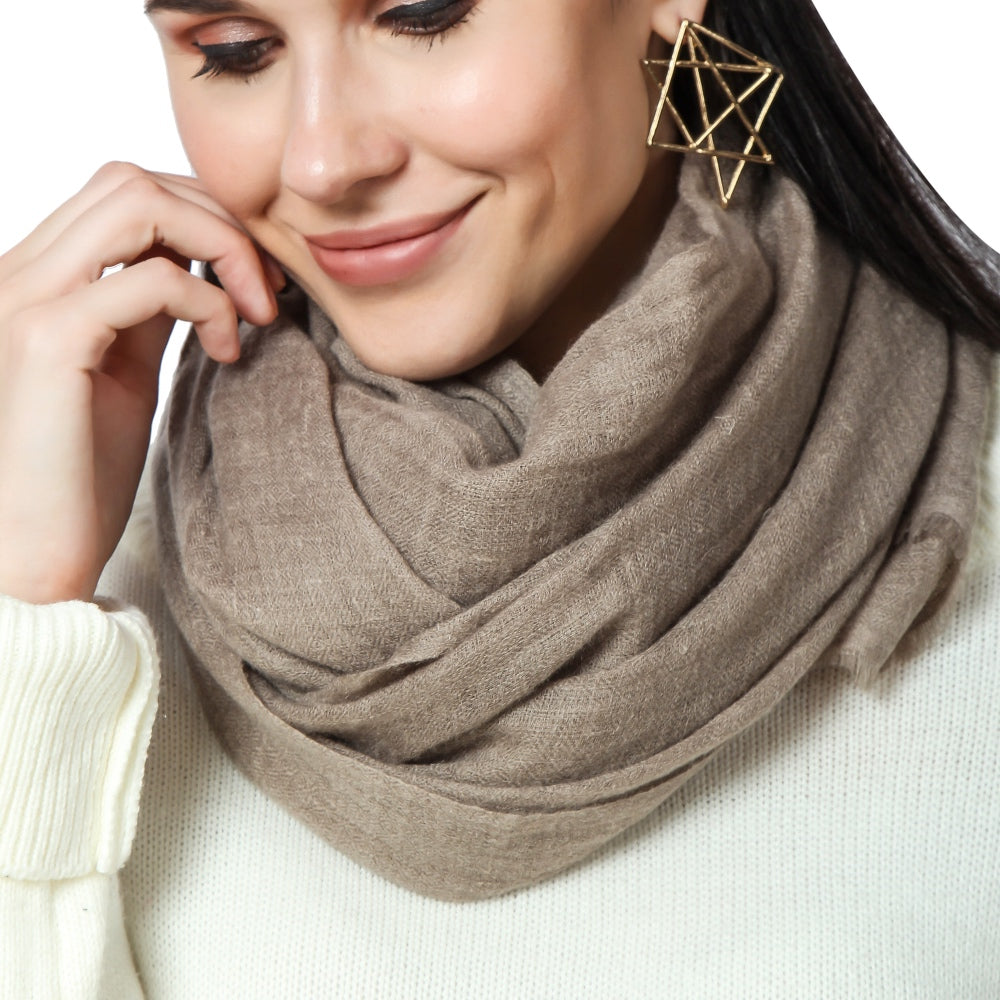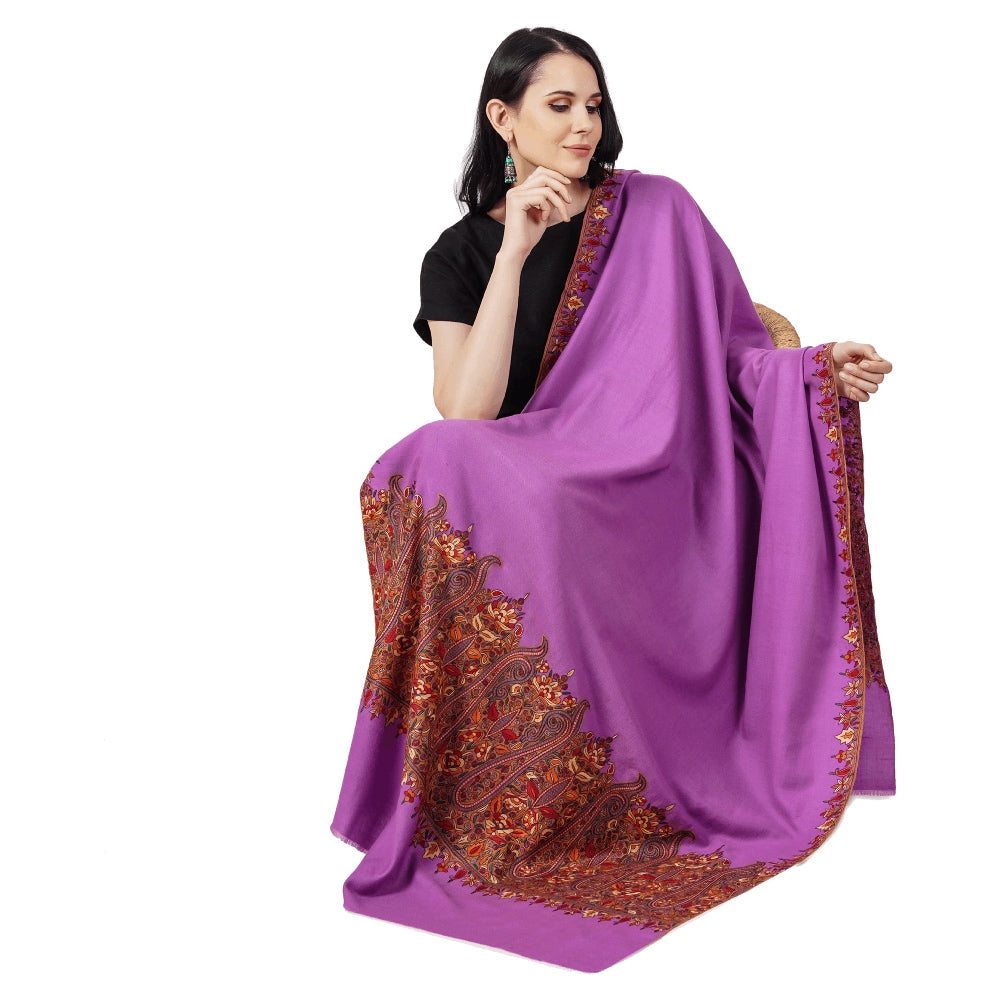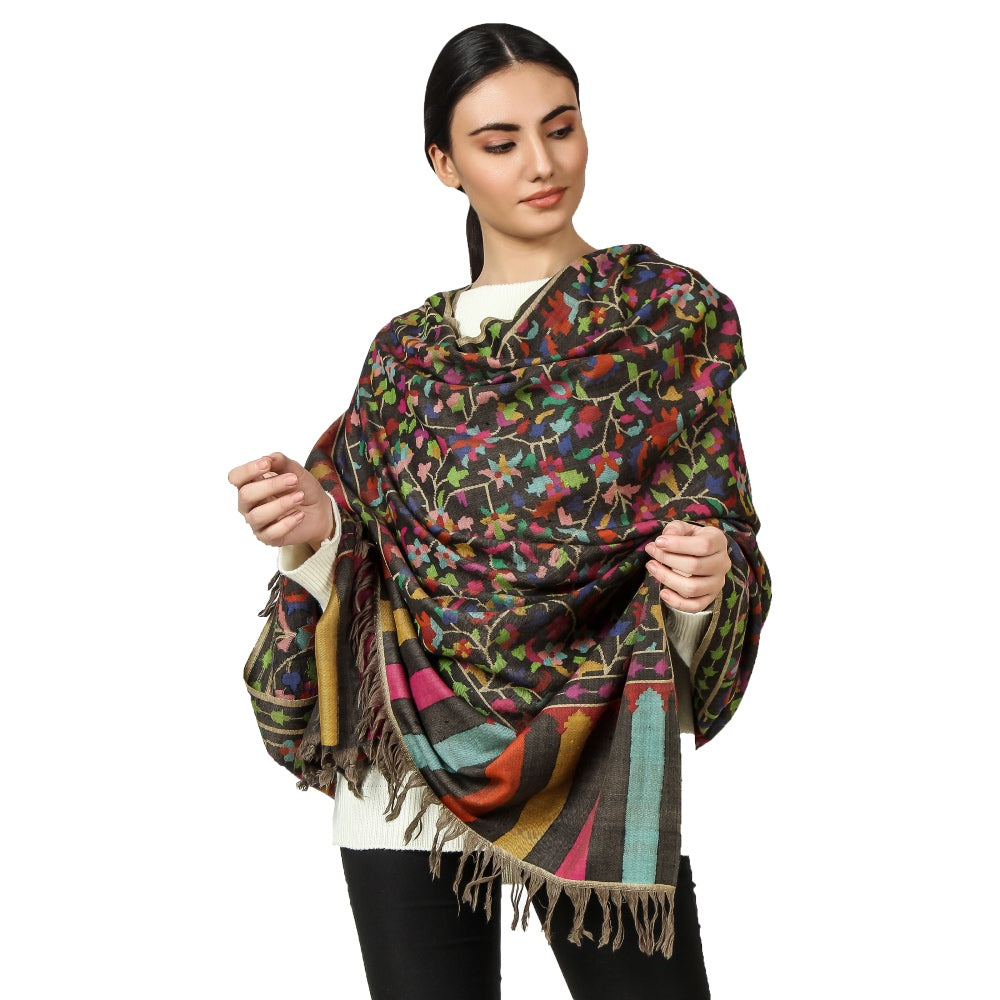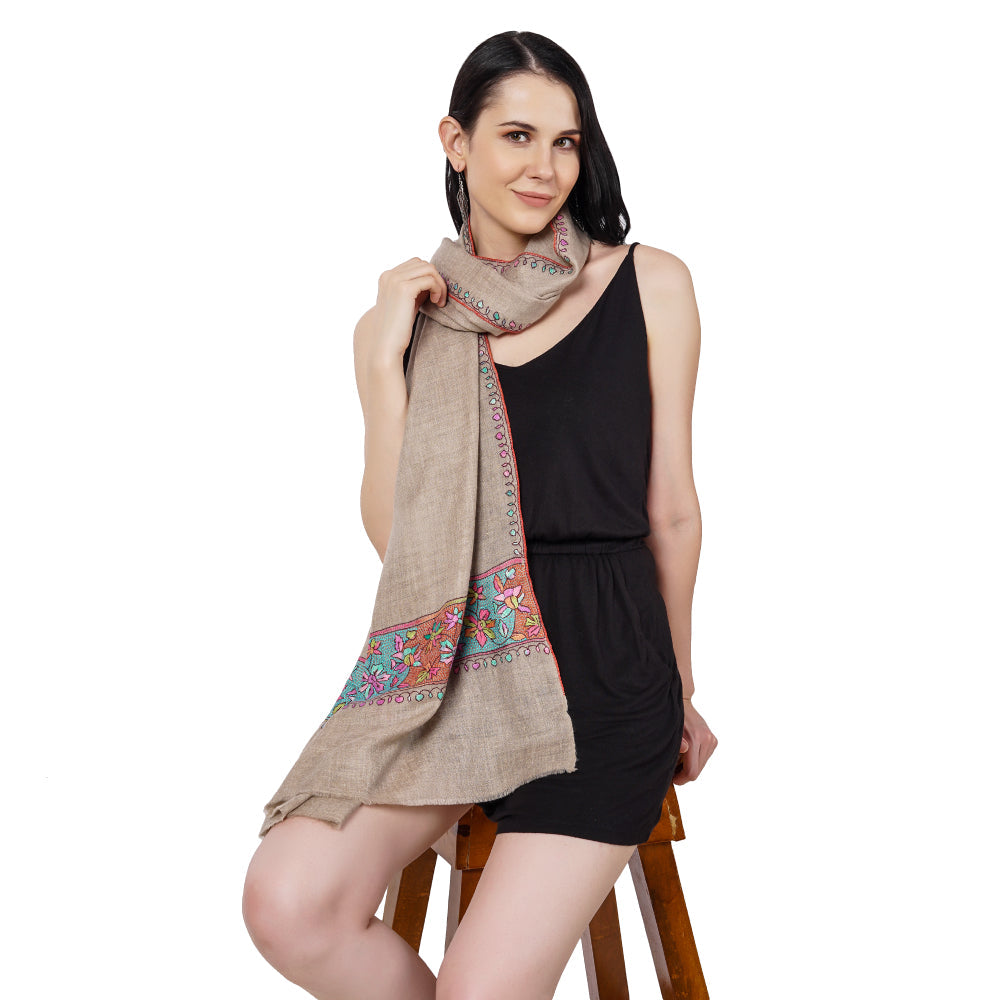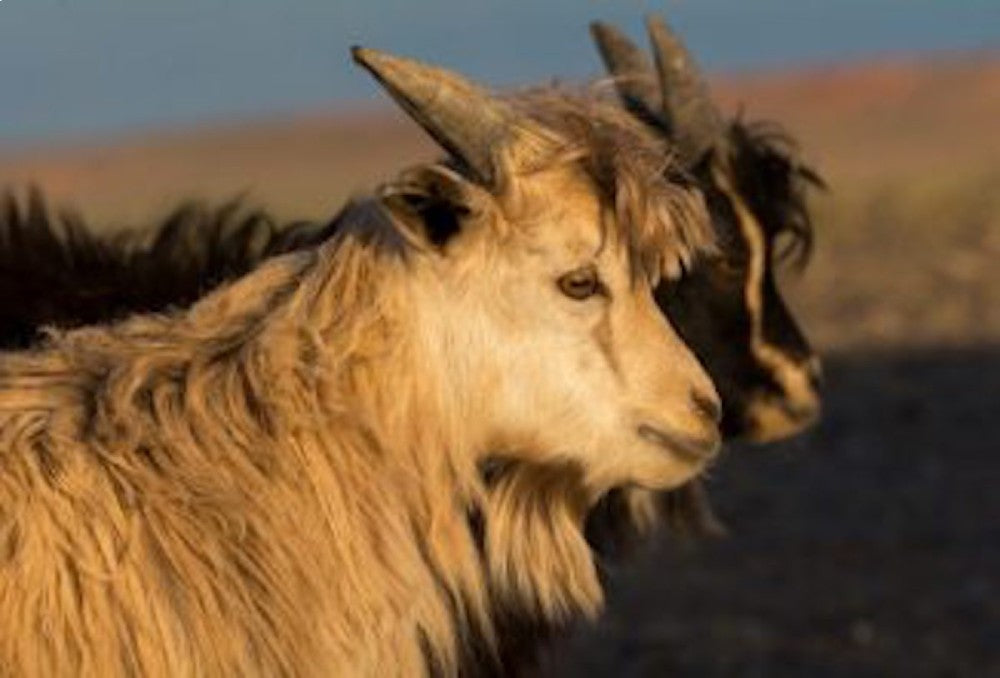
What is Mongolian Cashmere?
Share
Mongolian Cashmere is a luxury fiber that comes from the undercoat of the Cashmere goat. The Cashmere goats are raised in the harsh climate of Mongolia, where the temperature can drop as low as -28°C in winter, making their undercoat particularly thick and warm. Mongolian Cashmere is known for its softness, warmth, and durability, which make it one of the most sought-after materials for luxury clothing and accessories.

What makes Mongolian Cashmere unique is its long, fine fibers, which can be up to 45 millimeters in length. These long fibers make the cashmere particularly soft and durable. Additionally, the harsh climate of Mongolia means that the Cashmere goats produce a particularly dense and warm undercoat, which is ideal for cold weather garments.
The history of the Mongolian Cashmere industry dates back to the early 1900s when cashmere goats were first introduced to Mongolia from China. However, it wasn't until the 1970s that the industry really took off. At that time, the Mongolian government began investing in the cashmere industry, and it quickly became one of the country's most important exports. Today, the Mongolian Cashmere industry is a significant contributor to the country's economy, providing jobs for thousands of people and generating millions of dollars in export revenue.
Also read: Is Mohair better than Cashmere?
Mongolian Cashmere Fiber
Mongolian Cashmere has several unique characteristics that make it highly valued in the luxury clothing market. The fiber is extremely soft and lightweight, which makes it comfortable to wear against the skin. It also has excellent insulating properties, which makes it ideal for cold weather garments. Additionally, Mongolian Cashmere is highly durable, which means that it can last for many years with proper care.

Cashmere is harvested from the undercoat of Cashmere goats during the spring molting season. During this time, the goats naturally shed their undercoat, which is then collected and processed into cashmere fiber. Harvesting the cashmere is a delicate process, as the undercoat must be carefully combed or sheared to avoid damaging the long, fine fibers.
While Mongolian Cashmere shares many of the same characteristics as other types of cashmere, such as those produced in China or India, there are some key differences. For example, Mongolian Cashmere fibers are typically longer and finer than those produced in other countries. This makes the fiber softer and more durable, and also means that it can be spun into finer yarns.
Mongolian Cashmere is typically graded according to the diameter of the fibers. The finest fibers, which are less than 15 microns in diameter, are considered to be the highest quality and are used to make the most luxurious cashmere products. Fibers that are between 15 and 19 microns in diameter are considered to be of medium quality, while fibers that are 19 microns or larger are considered to be of lower quality. The grade of the cashmere can have a significant impact on the final product, with higher grade fibers producing softer, more luxurious garments.
The Mongolian Cashmere Industry
The Mongolian Cashmere industry has grown significantly over the past few decades, with cashmere exports accounting for a significant portion of the country's GDP. The industry is made up of a variety of players, including herders, processors, manufacturers, and exporters. Together, these groups work to produce high-quality cashmere products that are in demand around the world.

The production process for Mongolian Cashmere begins with the herders who raise the Cashmere goats. These herders work to ensure that their goats are healthy and well-cared-for, as healthy goats produce the best quality cashmere fiber. Once the cashmere is harvested, it is transported to processing facilities where it is cleaned, dehaired, and sorted. From there, the processed cashmere is sent to manufacturers who use it to create a variety of products, including clothing, accessories, and home goods.
Compared to other countries that produce cashmere, such as China and India, the Mongolian Cashmere industry is relatively small. However, the quality of Mongolian Cashmere is highly regarded by luxury fashion brands and consumers around the world, which has helped to increase demand for Mongolian Cashmere products.
The global demand for Mongolian Cashmere has grown significantly in recent years, with consumers around the world seeking out high-quality, sustainable materials. This has helped to drive up prices for Mongolian Cashmere, which has been a boon for the country's economy. The industry has also helped to create jobs and provide income for people living in rural areas of Mongolia, where jobs can be scarce.
Overall, the Mongolian Cashmere industry has had a significant impact on the local economy, providing jobs and income for thousands of people. As demand for luxury products continues to grow, the industry is poised for further growth and expansion in the years to come.
Also read: What is the most expensive Cashmere?
The Benefits of Mongolian Cashmere
Mongolian Cashmere has a variety of benefits, both for the people who wear it and for the environment. Here are some of the key benefits of Mongolian Cashmere:
Health Benefits of Wearing Mongolian Cashmere
Mongolian Cashmere is incredibly soft and comfortable, which makes it ideal for wearing against the skin. It is also highly breathable, which means that it can help regulate body temperature and prevent overheating or sweating. Additionally, Mongolian Cashmere is hypoallergenic, which means that it is unlikely to cause allergic reactions in people who are sensitive to other types of wool or synthetic fibers.
Environmental Benefits of Mongolian Cashmere Production
Mongolian Cashmere production has a number of environmental benefits. First, the Cashmere goats that produce the fiber are well-suited to the harsh Mongolian climate, which means that they require very little in the way of supplemental food or shelter. This makes them a low-impact livestock option, as they do not require large amounts of resources to care for.
Additionally, many Mongolian Cashmere producers are committed to using sustainable and environmentally-friendly production methods. This includes things like using natural dyes, recycling water, and minimizing waste. By supporting these producers, consumers can help to reduce the environmental impact of the fashion industry.
Benefits of Supporting Mongolian Cashmere Industry
By supporting the Mongolian Cashmere industry, consumers can help to support sustainable and ethical production methods, while also promoting economic growth and development in Mongolia. This can help to create jobs and improve the quality of life for people living in rural areas, where jobs can be scarce.
Additionally, by purchasing Mongolian Cashmere products, consumers can be assured that they are getting high-quality, sustainable products that are made with care and attention to detail. This can help to promote a more responsible and conscious approach to fashion, and can help to reduce the environmental impact of the industry as a whole.
Also read: Do goats die for Cashmere?
How to Care for Mongolian Cashmere
Mongolian Cashmere is a delicate and luxurious fabric, and proper care is essential to maintain its softness and quality. Here are some tips for caring for Mongolian Cashmere:
Best Practices for Washing Mongolian Cashmere
When washing Mongolian Cashmere, it is important to use a gentle detergent that is designed for wool or cashmere. Avoid using harsh detergents, bleach, or fabric softeners, as these can damage the fibers and cause them to lose their softness and shape.
To wash Mongolian Cashmere, fill a basin or sink with lukewarm water and add a small amount of detergent. Gently swirl the garment in the water, being careful not to rub or agitate it too much. Rinse the garment thoroughly with clean water, and gently squeeze out any excess water.
Do not wring or twist the garment, as this can cause it to stretch or lose its shape. Instead, lay the garment flat on a clean towel and gently roll it up to remove any remaining water. Then, reshape the garment and lay it flat to dry.
Storing Mongolian Cashmere
When storing Mongolian Cashmere, it is important to keep it in a dry, cool, and well-ventilated area. Avoid storing it in direct sunlight or near sources of heat, as this can cause the fibers to become brittle and damaged.
To prevent moths from damaging your Mongolian Cashmere, store it in a sealed container or use moth repellent products. You can also store your cashmere with cedar wood or lavender sachets to keep moths at bay.
Maintaining the Softness and Quality of Mongolian Cashmere
To maintain the softness and quality of your Mongolian Cashmere, it is important to avoid exposing it to harsh chemicals or abrasive materials. Avoid wearing jewelry or accessories that can snag the fibers, and be careful when carrying bags or purses that may rub against the fabric.
To keep your Mongolian Cashmere soft and fluffy, you can brush it gently with a cashmere comb or soft-bristled brush. This will help to remove any pills or fibers that may have become tangled, and will help to restore the fabric's natural softness and luster.
By following these care instructions, you can help to ensure that your Mongolian Cashmere garments remain soft, luxurious, and beautiful for years to come.
Also read: How to clean Cashmere?
Frequently Asked Questions
-
What is the difference between cashmere and wool?
Cashmere is a type of wool that comes from the cashmere goat. It is softer, finer, and lighter than traditional wool, and is highly valued for its luxurious feel and insulation properties.
-
Is Mongolian Cashmere ethical?
The Mongolian Cashmere industry is committed to ethical and sustainable practices, and many producers in Mongolia work closely with local herders to ensure fair treatment and wages. Additionally, the harsh climate of Mongolia means that the goats are raised in natural conditions without the need for harsh chemicals or artificial supplements.
-
How can I tell if my cashmere is genuine?
Genuine cashmere is soft, lightweight, and fluffy, with a luxurious feel and a subtle sheen. It should also be able to stretch without losing its shape or becoming misshapen. To ensure that your cashmere is genuine, look for the label or certification that indicates the product is made from 100% cashmere.
-
Can I machine wash my Mongolian Cashmere?
While it is possible to machine wash Mongolian Cashmere, it is generally recommended to hand wash it using a gentle detergent and lukewarm water. This will help to prevent damage to the fibers and ensure that the garment retains its softness and shape.
-
What is the average cost of Mongolian Cashmere products?
The cost of Mongolian Cashmere products can vary widely depending on the quality of the product and the brand. However, you can generally expect to pay a premium price for genuine Mongolian Cashmere products due to its rarity and high quality.
-
What should I look for when buying Mongolian Cashmere products?
When buying Mongolian Cashmere products, it is important to look for products that are made from high-quality cashmere fibers and that have been ethically and sustainably produced. You should also look for products that are labeled as 100% cashmere, and that have been tested for quality and authenticity.
Conclusion
In conclusion, Mongolian Cashmere is a luxurious and highly prized fabric that is renowned for its softness, warmth, and quality. With its unique characteristics and rich history, Mongolian Cashmere has become a highly sought-after product among discerning consumers and fashion enthusiasts around the world.
Not only does Mongolian Cashmere offer a range of health and environmental benefits, but it also provides important economic benefits to the local community in Mongolia. By supporting the Mongolian Cashmere industry and purchasing high-quality Mongolian Cashmere products, you can help to ensure the continued growth and success of this unique and valuable industry.

